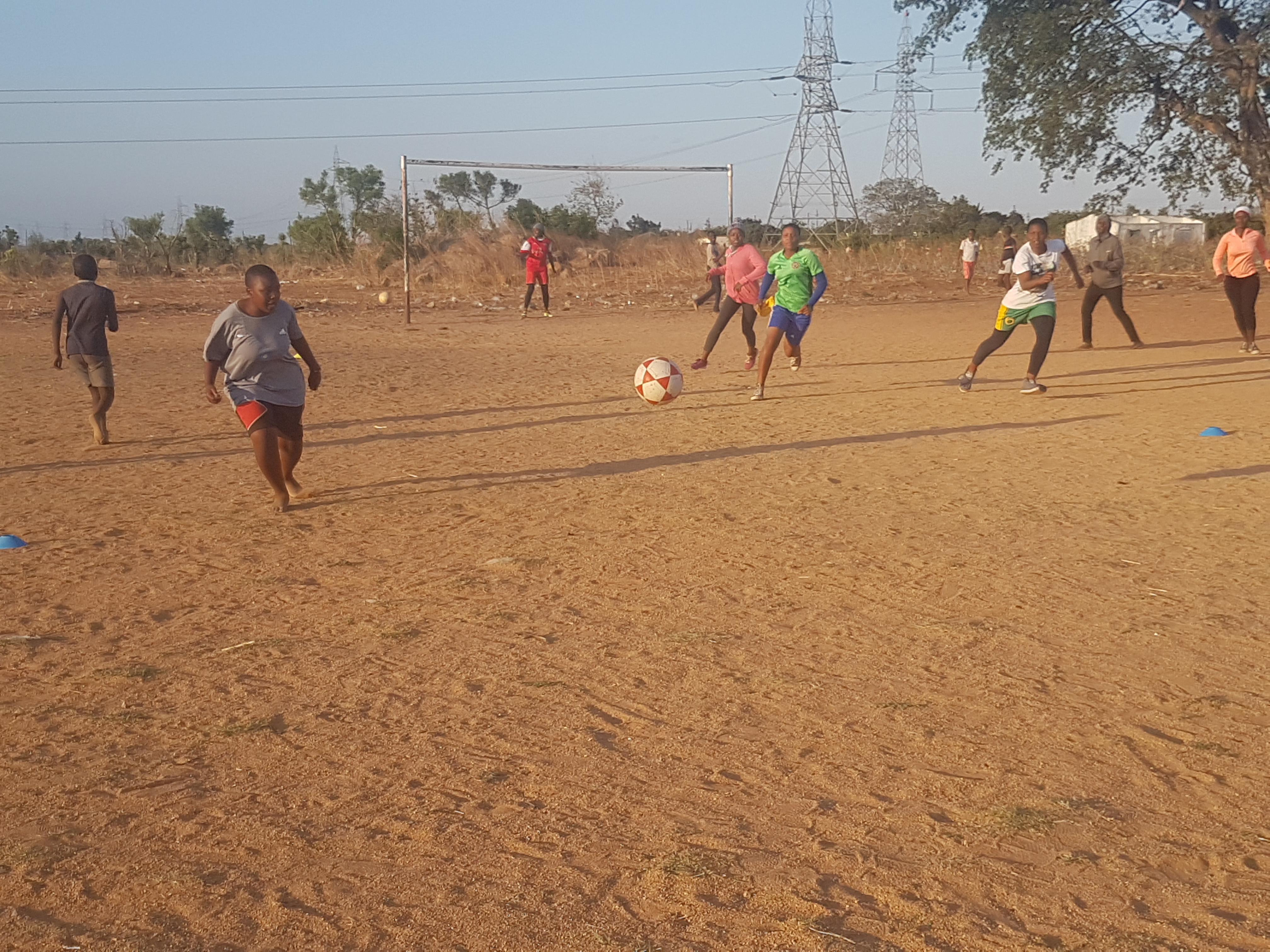
Western Rangers girls in traning
By Alvin Moyo, Football Writer
All across the world, professional soccer clubs employ youth academies to hopefully develop players at a high level.
Starting at young ages, players gradually climb up each age group with the hope of breaking into the senior team. Although academies have been in place in various countries for an extended period of time, American professional soccer clubs have only recently begun investing in youth systems.
In 2020, Western Rangers Academy was established, a youth football club in Pumula South, Bulawayo. Rangers developed a model based on beginning the development process at official youth academy level all the way to the pro team.
While most youth clubs have an academy with the U-14 to U-18 age groups, Rangers has a full youth system from U-5 to U-18 which includes both an academy and a recreational program for boys and girls.
Rangers’ system begins at four years old with the Little Lions program. In these early stages, the players are taught how to play with others on the field and begin learning the technical part of the game such as dribbling, passing, and shooting.
At eight years old, players can then choose a path for their future. They can either try out for the academy program or the recreation program. The academy is a more competitive program – designed for more advanced players. On the other hand, the recreational side serves as an additional resource for beginner players.
However, both programs are interchangeable as players progress and grow older, providing the opportunity for recreational members to make the transition to the academy. As a result, both paths will guarantee players top coaching of the “four pillars”.
Rangers’ “four pillars” of the game are technical, tactical, mental, and physical. The technical aspects of the game include dribbling, passing, and shooting, focusing on the correct fundamentals for 90 percent of their development during the U-5-to U-8 age groups.
Rangers Executive Director Godwin Moyo equates the early technical training to handwriting saying: “If I ask you to write something quickly, you’re going to revert to the way you wrote when you first learned.”
As the player enters their teen years, they will begin to learn the tactical side of the game. Throughout their development, players are also taught the mental and physical aspects of the game.
Each team will also employ the same style favoured by Moyo who doubles up as the academy’s head coach. Using the familiar 4-2-3-1 formation, players are taught to play the ball from the back rather than launching it forward. Even goalkeepers are taught to skilfully use their feet instead of clearing the ball with booming kicks. It’s a style that has been very successful at every level and has garnered praise from opposing sides.
The Rangers academy is based on four tiers which narrows as the kids grow older. The purple team is the highest level, followed by white, gold, and black. While there are many teams representing each colour at the younger ages, there are only two purple teams by the time they reach 17 years of age. There are several factors in this narrowing of the pyramid which include players preferring to play for fun rather than competitive and picking up other hobby’s which become more important than soccer. No matter what they decide, the club still provides them with top level coaching to continue their development.
On the girl’s side, the club aspires to eventually be a member of the Zimbabwe Football Association’s women’s football structures and leagues. Rangers’ vision is to compete at the top level of play in the country for girls. Although there is no senior women’s team currently for Rangers, players will be provided with a valuable platform to achieve perhaps a college scholarship, potentially a career in professional soccer, and maybe, one day, the opportunity to play for the Zimbabwe Women’s National Team.
While the game has made great strides over the past 15 years, Rangers is taking an active part in working to grow the soccer culture in Bulawayo. Part of that is helping parents of children in Rangers understand the purpose of development.
“While results in tournaments are a result of the work put in, our main focus is about developing players,” added Moyo.
“Sometimes it’s difficult for parents to understand why the result of a match isn’t always the most important takeaway from a game, but that’s where we come in as coaches and directors. It’s our job to help educate not only the players, but also parents who are new to soccer.”
Ultimately, the overall goal for Rangers is to send 100 percent of their players to the next level. While that may seem to be a lofty goal, the club has made great strides toward that number.
“Not every player will play at the highest level,” said Moyo.
“But maybe we can help them go to college via scholarship.”
At the end of the day, Rangers is about developing kids on and off the field. Rangers’ vision is to teach kids about life, a love of the game, and helping them to grow as players. Whether they want to play professionally, play for fun, or use it as a tool to attend college.
As Moyo puts it: “Everything we do is about the kid.”







